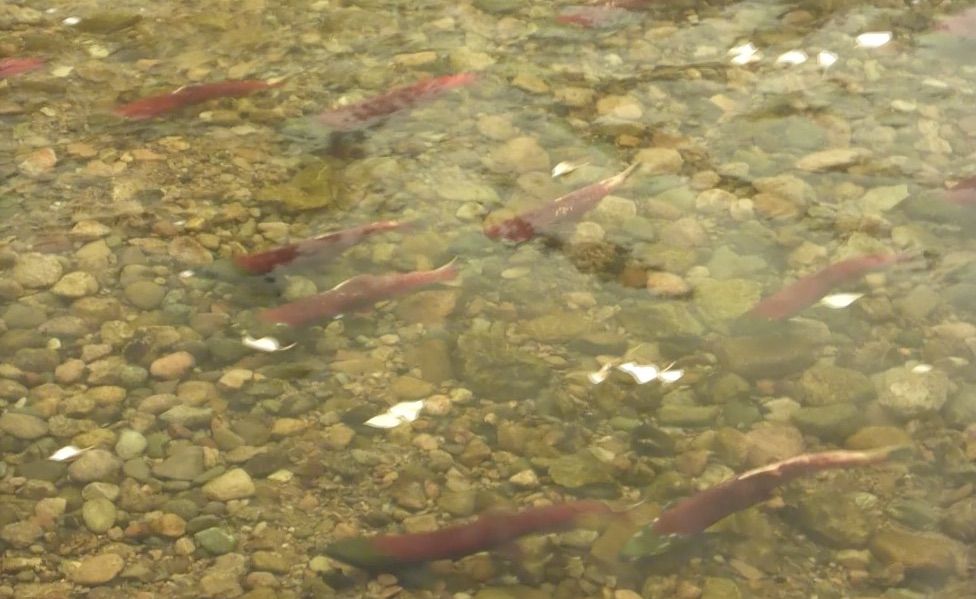Building on our work in Phase 1, the overarching goal of this phase of research is to create a comprehensive research framework using hydrological modeling supplemented by observations to identify the relative impacts of climate change and flow regulation on water availability, flow timing and water temperatures in the rivers and streams of the Nechako River Basin (NRB). This is to improve the scientific basis for managing the ecosystems of the NRB and enhance understanding of the water supply by identifying challenges in the resiliency of existing water infrastructure and management systems under the increasing risks of future water shortages and floods. This work will be extremely important and informative especially for the management of salmon within the NRB, as well as the entire Fraser River Basin

Sockeye salmon spawning in the Stellako River, near Fraser Lake, BC
Phase 2 Objectives
- To apply and validate a state-of-the-art hydrological model (the Variable Infiltration Capacity model with glacier dynamics or VIC-GL) to the NRB that incorporates the effects of glaciers, lakes and reservoirs in addition to climate variability and trends on flows;
- To establish recent variations and trends in water temperatures across the NRB and their driving mechanisms;
- To develop and test a diagnostic water temperature model (the Air2Stream Model) for the NRB;
- To assess how climate change affects so-called “Pineapple Express” storms and their impacts; and
- To project potential future influences of flow regulation and climate change on NRB flows and water temperatures.
Results using the Air2Stream hydrological model in the NRB have yielded promising initial results. The model, as applied to data from the Stellako River (Figure 1), showed close correspondence of modelled, or simulated data to observed data. Please see here for details related to this work.
